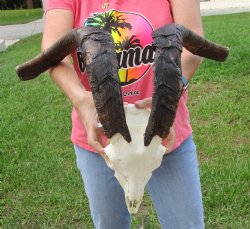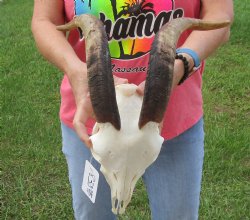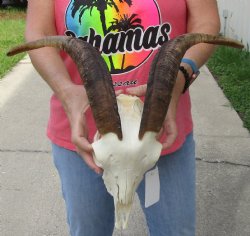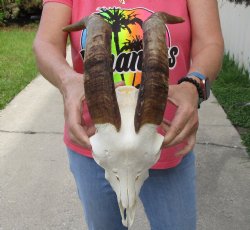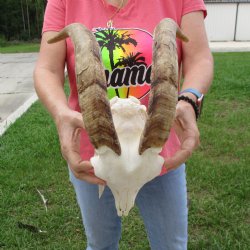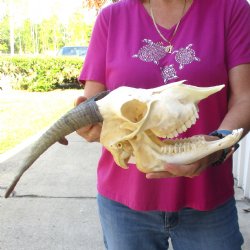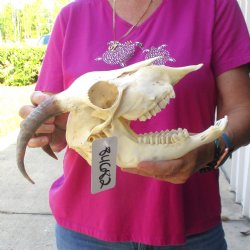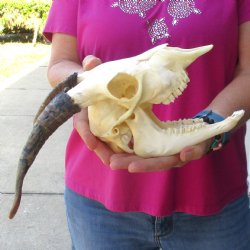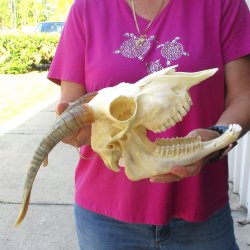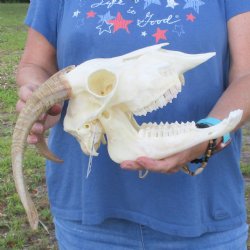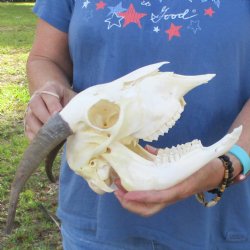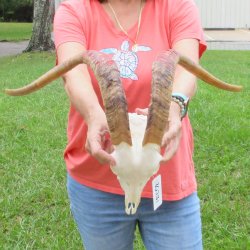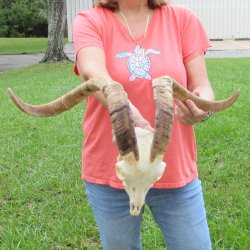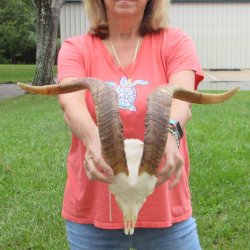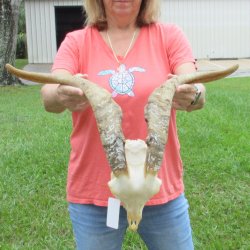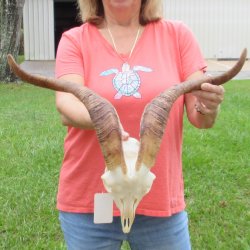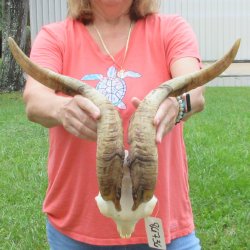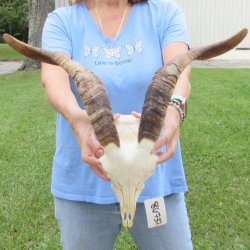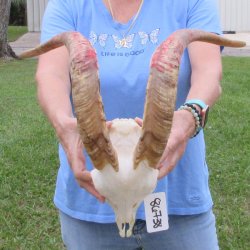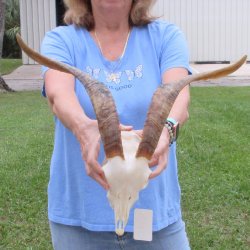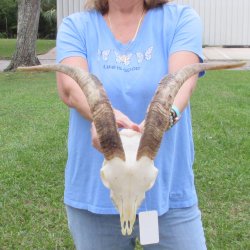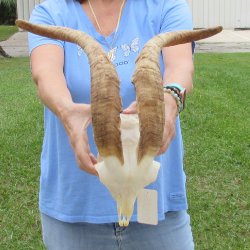Goat Skull, Goat Skulls

SKU: (A) SKULLGOAT-AFRICA
Our Retail Website With No Minimum Order is:
Premium Goat Skull Selection: Find Your Perfect Piece at the Best Price
Looking to integrate a goat skull into your space or collection? Understanding these symbols of tradition and nature involves considering authenticity, sourcing, and care. This guide ensures you‚ are informed about the historical significance and practical aspects of goat skulls, preparing you for a conscientious acquisition and display.
Authentic goat skulls are valued for their unique beauty, cultural symbolism, and significance in art, serving as a visual and thematic representation of various traditions and beliefs.
Goat skulls should be ethically and sustainably sourced, with Atlantic Coral Enterprises committing to responsible practices and ensuring all products are authentic and sourced while prioritizing animal welfare and environmental considerations.
Proper cleaning, maintenance, and display techniques are crucial for the preservation of goat skulls, including understanding their anatomy for informed selections and using appropriate care methods to maintain their condition and value.
Authentic Goat Skulls: The Beauty and Significance
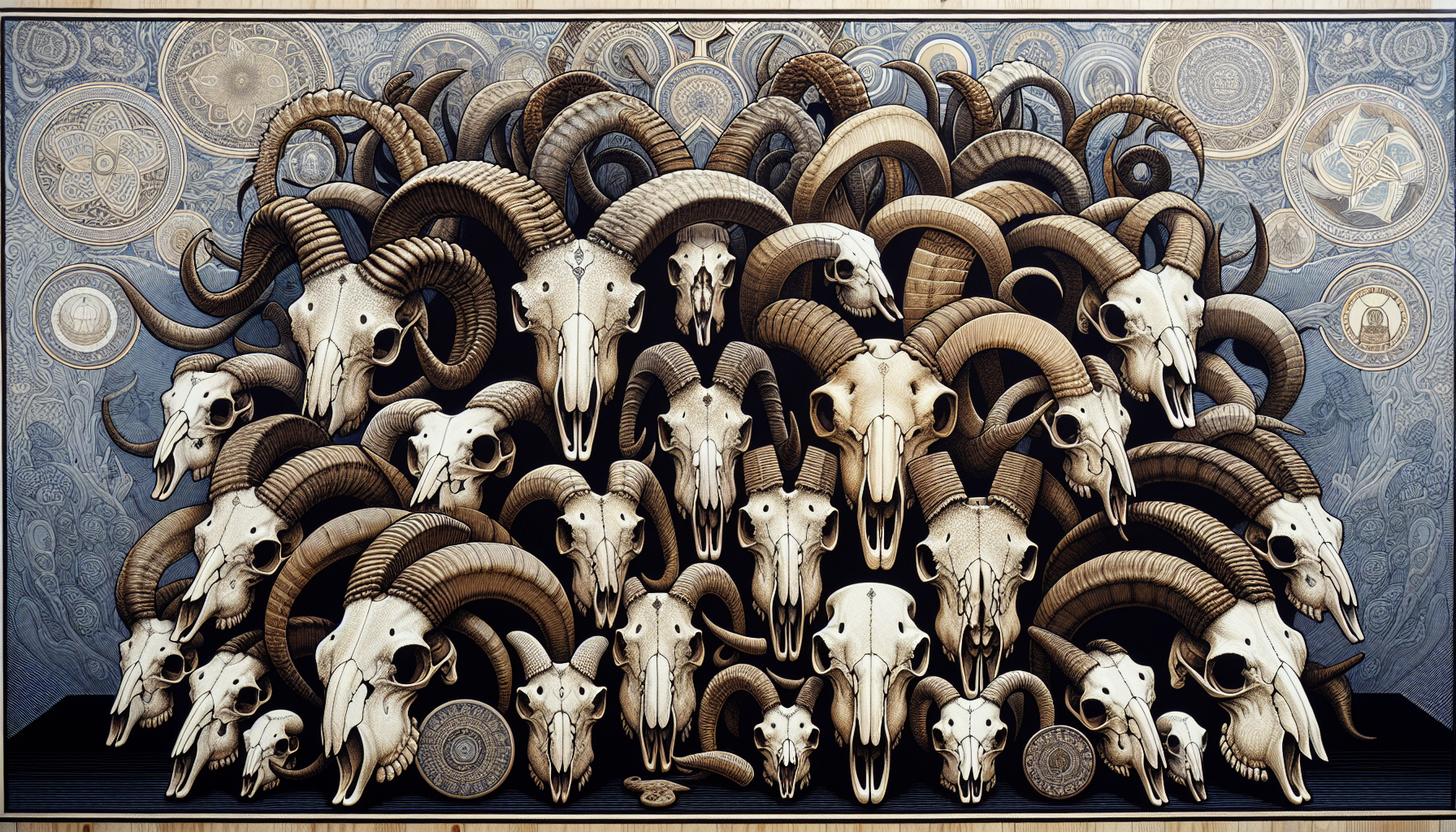
An authentic goat skull transcends mere decoration. Its a convergence of aesthetic appeal and cultural significance, a tangible representation of age-old traditions and artistic expressions. Across the globe, diverse cultures revere goat skulls for their symbolic resonance, attributing them a powerful presence within their artistic and cultural domains. Authentic goat skulls, with their natural beauty and cultural relevance, are coveted decorations that mirror personal taste and cultural ties.
But their allure goes further than mere symbolism. The intricacy of their structure, the twist of their horns, the curve of their brow - all contribute to a unique piece of natural art. Just as each goat is unique, so too is each skull, making every piece a unique addition to any collection. To truly appreciate the beauty of these skulls, one must view a larger image that captures the fine details.
Symbolism in Art and Culture
The strong symbolism attached to goat skulls traces its roots back to antiquity. They have been historically connected to deities, influencing their symbolism across cultures and myths. The Roman goddess Venus, whose sacred animal was a goat, became associated with love, desire, and the five-pointed star traced by her namesake planet.
Home Decor and Interior Design
Integrating goat skulls into home decor allows individuals to create a dramatic focal point that showcases their aesthetic preferences or cultural connections. They serve as distinctive wall sculptures, contributing to a rustic or gothic aesthetic in interior design. The rugged charm of a goat skull can complement various design themes, transforming ordinary living spaces into unique abodes of personal expression.
Whether displayed as a centerpiece on a mantle, mounted on a wall, or strategically placed within a bookshelf, a goat skull adds an intriguing touch to any room. Its detailed texture, natural coloration, and intricate form can captivate onlookers, sparking conversations around culture, art, and individual taste. This unique piece may even become one of your recently viewed items as you admire its beauty in your space.
Sourcing Genuine Goat Skulls: Ethical and Sustainable Practices
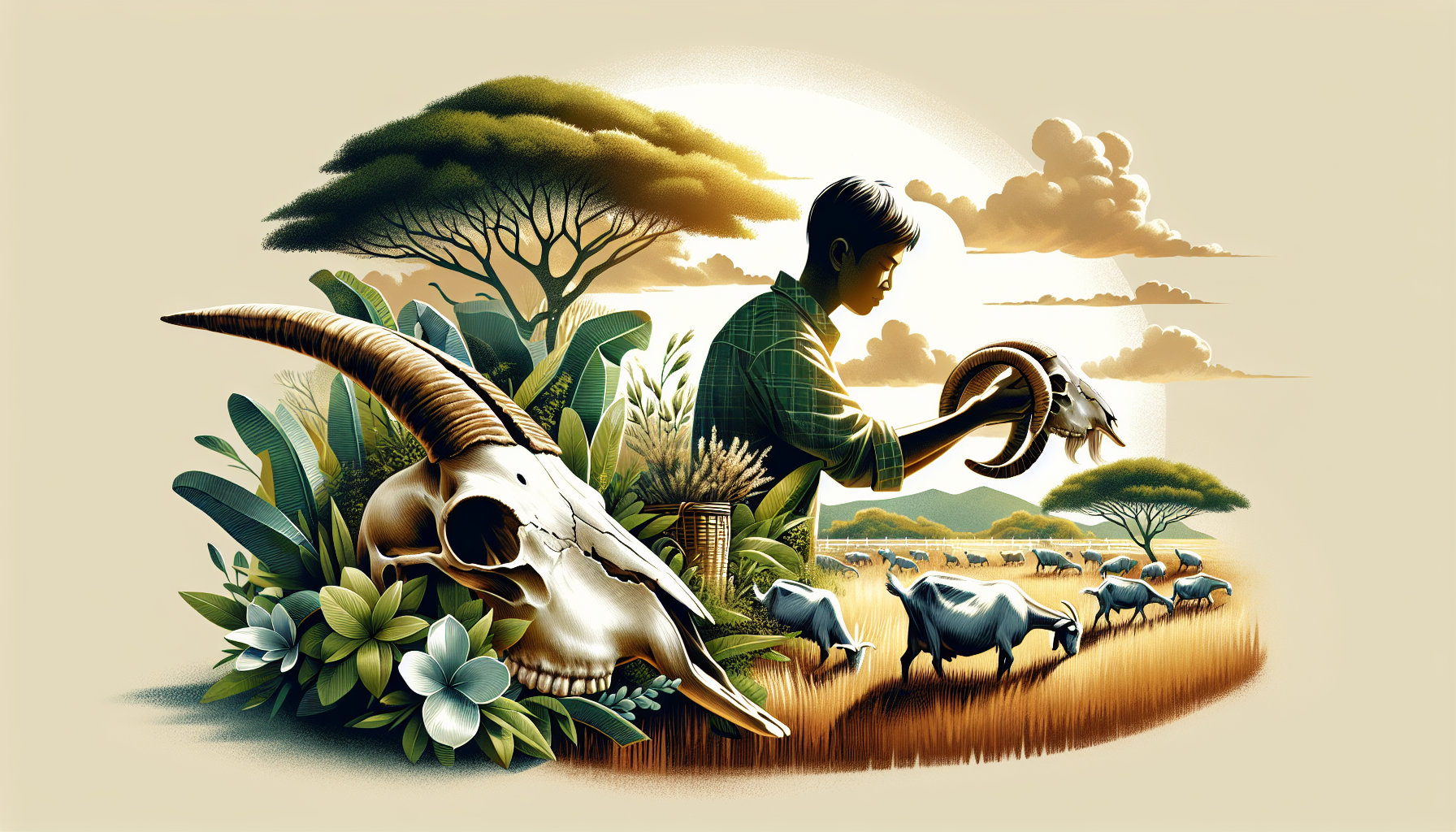
The process of sourcing goat skulls must be undertaken with the highest regard for nature and the welfare of animals. Ethical and sustainable sourcing ensures environmentally friendly acquisition practices that prioritize the welfare of the animals. The goat skulls sold by Atlantic Coral Enterprises are sourced from the United States and India, where the farming industry utilizes goats for meat, milk, fur, skin, and their skulls.
Rest assured, every goat skull you purchase from us is authentic. All goat skulls supplied from the US are 100% real, offering consumers the assurance of authenticity. We believe in transparency and honesty in our business practices, and we are committed to providing only the best, most ethically sourced products to our customers.
Farming Practices
Goats are bred for their:
meat
milk
fur
skin
skulls
This ensures that no part of the animal goes to waste. Our goat skulls are ethically farmed primarily in India and Africa, where sustainable farming practices are a priority. In collaboration with the wildlife department, we ensure the highest standards of ethical sourcing.
These farming practices have been established with the utmost respect for the animals and the environment.
Atlantic Coral Enterprises' Commitment
Atlantic Coral Enterprises remains steadfast in its dedication to ethical sourcing. By following legal entry procedures, we support sustainable farming methods by utilizing animal byproducts from food-producing ranches, thus contributing to a more sustainable livestock industry.
Moreover, we guarantee the authenticity of our products. Every goat skull available for purchase from Atlantic Coral Enterprises is real, not a replica, and is a by product of the natural life cycle. We believe that our customers deserve the best, and we make no compromises when it comes to the quality and authenticity of our products.
Understanding Goat Skull Anatomy: Horns, Curves, and More
Understanding the unique anatomy of goat skulls is key to deepening your appreciation. Goat skulls have several distinct features, including:
Paired horns made of a bony core and a permanent keratinized sheath
Horns that are never branched and vary in shape and size across species
Certain features significantly influence the quality assessment of goat skulls. For instance, the foramen magnum, where the width exceeds the height, offers indicators of superior quality. Understanding these details allows one to appreciate the intricate beauty of these skulls and make an informed choice when selecting a piece.
Goat Horns
Goat horns are striking structures. Part of the Bovidae family, goat horns originate from growth over the frontal bones of the skull and continue to grow throughout the animals lifetime. They exhibit varying shapes, sizes, and curvatures, with domestic goat skulls horn generally ranging from 10 to 18 inches in length.
The size and condition of goat horns can be influenced by multiple factors, including the age of the animal as well as their nutritional intake and climate. Understanding these nuances can provide valuable insights into the life of the animal and add a fascinating dimension to the art of goat skull collection.
Differences Between Goat, Sheep, and Deer Skulls
Despite initial similarities, goat, sheep, and deer skulls each bear unique characteristics that differentiate them. Here are some key differences:
Goat horns are made of a keratinized epidermis, similar in composition to fingernails or hooves, unlike deer antlers that are bony structures.
Deer skulls tend to be flatter and longer with a more elongated nasal structure compared to those of goats and sheep.
Sheep skulls have narrower muzzles compared to goats, and goats often feature more pronounced ridges for muscle attachment.
Sheep skulls generally have larger and more protruding eye sockets relative to skull size than deer, while deer exhibit more pronounced nuchal crests and ear bone openings that are situated closer to the back of the skull compared to sheep. Recognizing these differences can enhance ones understanding and appreciation of these fascinating creatures.
Preservation and Cleaning Techniques
Proper cleaning and maintenance techniques are necessary to maintain the natural beauty and integrity of a goat skull. The initial cleaning involves:
Removing as much flesh, blood, and brain matter as possible
Submerging the skull in water for 48 hours
Boiling the skull to remove all remaining fat and flesh
Caution should be taken to avoid overboiling and bone disintegration.
After this, the skull is immersed in a solution of 5-10% hydrogen peroxide to bleach it to the desired whiteness, taking care not to overexpose it to the solution. Following this, the skull is thoroughly rinsed to remove residual hydrogen peroxide and prevent further decomposition.
Once the skull is clean and dry, any loose bones can be reattached using wood glue, as it dries transparent and remains inconspicuous.
The final step involves applying a protective finish, such as a coat of polyurethane, a mixture of white glue and water, or a clear coat, to preserve its natural beauty.
Choosing the Right Goat Skull for Your Needs
When choosing the right goat skull, consider factors like size, quality, and price. Using a cloth tape measure to determine the width and height of a goat skull ensures it fits the intended space or decorative arrangement. Commercial grade quality refers to goat skulls that are undamaged and have most of their teeth, making them a better choice for displays or resale.
The price of goat skulls varies depending on size and quality, with higher prices attached to larger and more aesthetically pleasing skulls. Keep in mind that the best piece isn't always the priciest, but rather the one that aligns with your personal taste and enhances your space.
Caring for Your Goat Skull: Maintenance and Display Tips
The beauty and longevity of your goat skull depend on proper care and maintenance. Regularly dust your goat skull with a soft brush or cloth to remove surface dirt and debris, which can accumulate over time and detract from its appearance. For a deeper clean, use a mild soap and water solution, but avoid harsh chemicals or abrasive cleaning tools that could damage the skull.
Make sure the goat skull is thoroughly dried after cleaning to avert potential damage from moisture. Protect the goat skull from prolonged exposure to direct sunlight, which can cause bleaching and deterioration of the bone over time.
Cleaning and Maintenance
Maintaining the cleanliness and condition of your goat skull necessitates consistent care. Here are some tips to follow:
Keep the skull dry to prevent any damage.
Only use gentle cleaning products to clean the skull.
If teeth from the goat skull fall out during cleaning, they can be carefully reattached using super glue or plain white glue after the skull has completely dried.
Remember, a well-maintained goat skull not only looks impressive but also lasts longer. Regular care and attention can ensure that your goat skull remains a captivating piece of decor for years to come.
Display Options
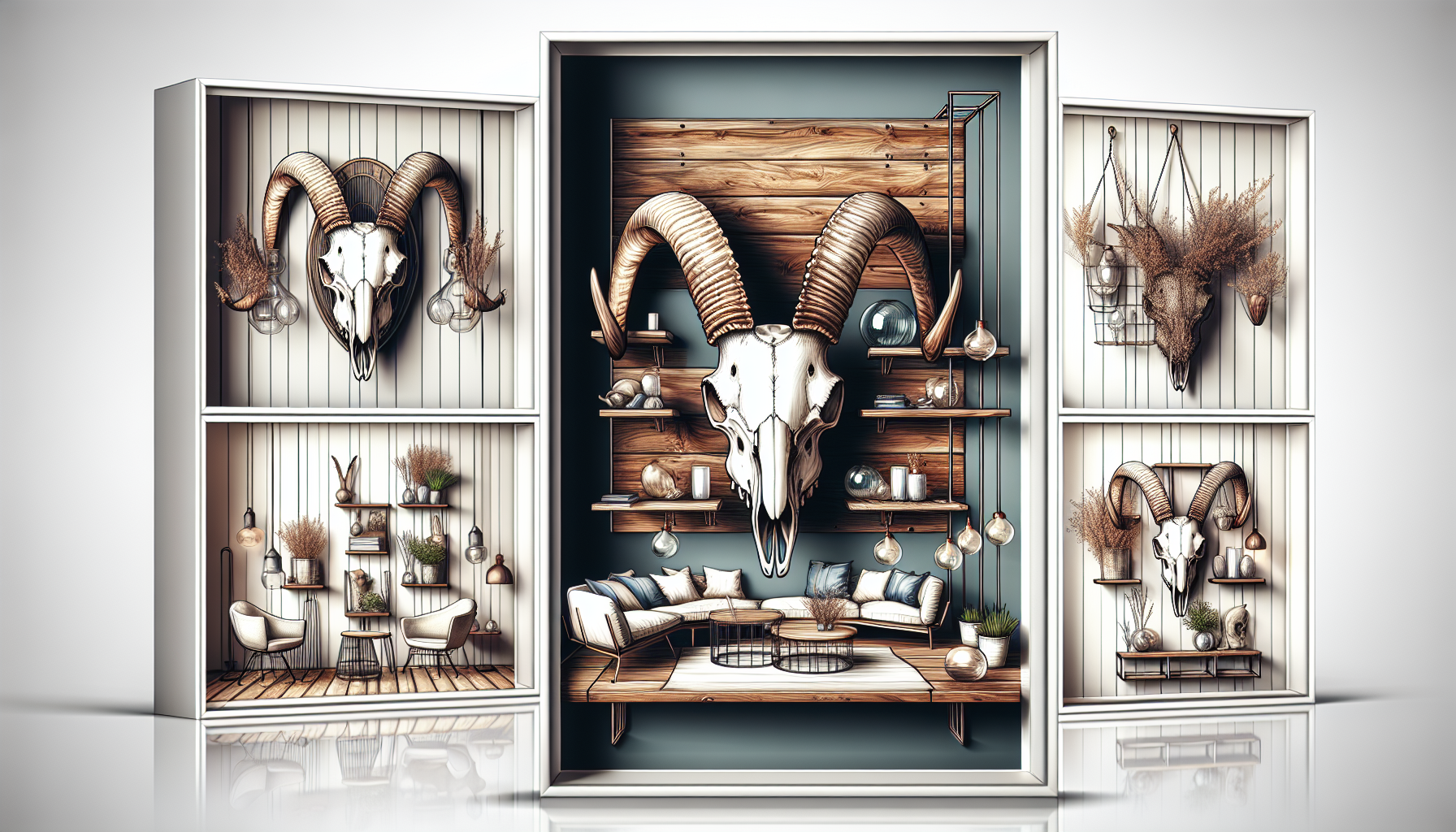
How you display your goat skull can be a creative undertaking. Here are some tips:
Mount the goat skull on the wall using a custom bracket or stand to create a striking focal point.
Choose a location for your goat skull that is not in a high traffic area to minimize the risk of damage.
Place the goat skull out of direct sunlight to maintain its color and integrity.
Whether you choose to feature it on a bookshelf, hang it above a fireplace, or display it on a stand, your goat skull is sure to draw attention and spark conversations. The key is to find a spot that highlights its unique features and complements the overall design of your space.
Protecting Your Investment
The preservation of your goat skull extends beyond routine cleaning and mindful storage. Protecting your investment also means ensuring its longevity and preservation with proper care and storage. You could consider displaying your goat skull on a wall mount or stand to make it a focal point in the room. If preferred, place the goat skull within a glass case to add an additional layer of protection while still showcasing it effectively.
When not on display, ensure your goat skull is kept in a secure place where it won't be knocked over or exposed to high traffic, which can lead to chips or cracks. After all, your goat skull is not just a decorative item, but a piece of art, a symbol of culture, and a testament to the beauty of nature.
Summary
In the fascinating world of goat skulls, we've explored the aesthetic appeal and cultural significance of these unique pieces. We've delved into their symbolic significance in art and culture, their use in interior design, and the importance of ethical sourcing and understanding their anatomy. We've also provided practical advice on selecting the right piece, understanding size and measurements, and tips for cleaning, maintenance, and display. As you embark on your journey of discovering, collecting, and appreciating goat skulls, remember that each piece is a testament to the beauty of nature and a symbol of cultural heritage.
Frequently Asked Questions
What is the difference between a goat skull and a sheep skull?
The main differences between a goat skull and a sheep skull lie in the shape of the forehead and the eye sockets, with sheep skulls having a flatter forehead and rounder eye sockets, while goat skulls have a more convex forehead and triangular or almond-shaped eye sockets.
What are the characteristics of the skull of a goat?
The skull of a goat is elongated and dolichocephalic, with a cephalic index of 47.8. It measures 19.2 cm in length and 9.2 cm in width, and has two supraorbital foramina on each side of the frontal bone.
Are the goat skulls real or replicas?
Yes, the goat skulls from Atlantic Coral Enterprises are 100% real, not replicas. You can be confident in their authenticity.
How are the goat skulls sourced?
The goat skulls are sourced from the United States and India, where the farming industry utilizes goats for various purposes.



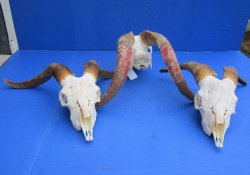



_546_thumb.jpg)
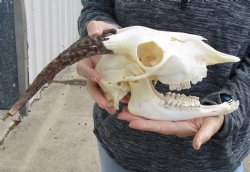
_1575_thumb.jpg)
_384_thumb.jpg)
_125_thumb.jpg)
_43_thumb.jpg)
